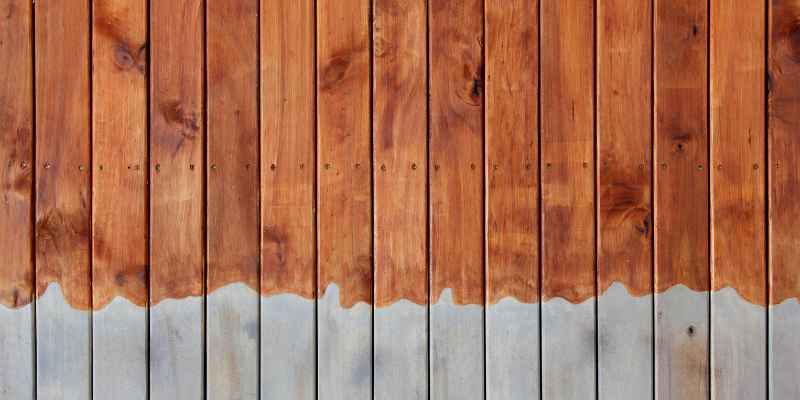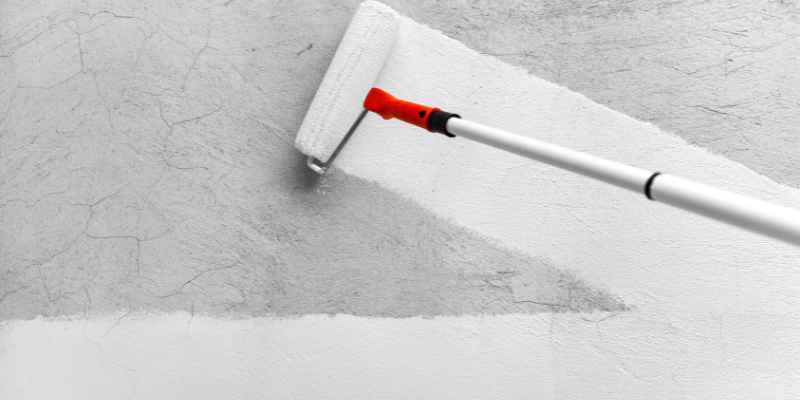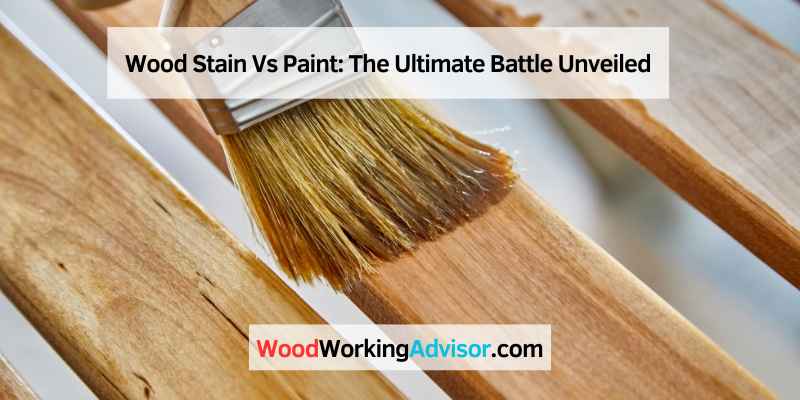Wood stain enhances the natural beauty and grain of wood, while paint provides an opaque and colorful coating. Wood stain preserves the wood’s texture and allows it to breathe, while paint forms a protective layer but conceals the wood’s natural characteristics.
Wood stain vs. Paint is an important choice to consider when finishing or refinishing wooden surfaces. Both options have their advantages and disadvantages, and understanding the differences is crucial for making an informed decision. In the following paragraphs, we will explore the characteristics, applications, and pros and cons of wood stain and paint, helping you choose the right option for your specific needs.
Whether you are working on a furniture piece, a deck, or an interior wood surface, this guide will provide valuable insights to assist you in making the best choice for your project.
Understanding Wood Stain
Welcome to our comprehensive guide on the topic of wood stain versus paint. In this first section, we will delve into the ins and outs of wood stain, providing you with valuable insights and knowledge. Understanding wood stain is essential in making informed decisions about your woodworking projects. So, let’s get started by answering the question, “What is Wood Stain?”
What Is Wood Stain?
Wood stain is a specially formulated solution that is applied to wood surfaces to enhance their appearance and protect them from damage. Unlike paint, which provides a solid opaque coating, wood stain penetrates the wood fibers, allowing the natural beauty of the wood to shine through. Stain is available in a wide range of colors, allowing you to choose the perfect shade to complement your desired aesthetic.
Types Of Wood Stain
Wood stain can be categorized into four main types:
- Water-based Stain: This type of stain is easy to clean up and dries quickly. It is also environmentally friendly as it contains fewer volatile organic compounds (VOCs) compared to other types of stains.
- Oil-based Stain: Oil-based stains offer excellent durability and provide a rich, deep color. They are often used for outdoor applications as they provide superior protection against moisture and weathering.
- Gel Stain: Gel stains are thick and provide better control and coverage. They are suitable for vertical surfaces as they do not drip or run.
- Acrylic Stain: Acrylic stains combine the durability of oil-based stains with the easy application of water-based stains. They are available in various colors and provide long-lasting protection.
Each type of wood stain has its own advantages and is suitable for different applications. Properly understanding the types of wood stains available will help you choose the best option for your specific project.
In conclusion, wood stain is a versatile and popular choice for enhancing the beauty of wood while providing protection against the elements. Now that we have covered the basics of wood stain, let’s explore the world of paint in our next section.

Understanding Paint
In the world of home improvement and interior design, paint plays a crucial role in enhancing the aesthetics and durability of surfaces. Understanding the different aspects of paint can help you make informed choices and achieve the desired finish for your project. In this article, we will delve into the world of paint, exploring what it is and the various types that are available. So, let’s get started with our first subheading – What is Paint?
What Is Paint?
Paint, in its simplest form, is a liquid substance that is applied onto various surfaces to provide protection, color, and texture. It primarily consists of pigments, binders, and solvents. The pigments give the paint its color, while the binders act as a medium to hold the pigments together and adhere them to the surface. Solvents are added to adjust the consistency and aid in the application process.
Types Of Paint
When it comes to choosing the right paint for your project, you’ll be presented with a wide range of options. Let’s take a look at some of the most common types of paint:
- Latex Paint: Also known as water-based paint, latex paint is a popular choice for both interior and exterior applications. It dries quickly, has low levels of VOC (volatile organic compounds), and can be easily cleaned with water. Latex paint is available in different finishes, such as flat, eggshell, satin, and semi-gloss.
- Oil-based Paint: Oil-based paint offers a durable and glossy finish, making it suitable for high-traffic areas and surfaces that require regular cleaning. However, it has a strong odor and longer drying time compared to latex paint.
- Chalk Paint: Chalk paint has gained popularity in recent years, especially in the realm of furniture restoration and shabby-chic aesthetics. It has a matte finish, excellent coverage, and can be applied without much surface preparation.
- Primer: Considered as a preparatory coat, primer paint helps improve the adhesion and durability of subsequent paint layers. It prevents stains, provides a smooth surface, and enhances paint coverage.
- Specialty Paint: There are various types of specialty paint available, such as stain-blocking paint, heat-resistant paint, anti-mold paint, and metallic paint. These paints are designed for specific applications and surfaces, providing unique features and benefits.
Differences Between Wood Stain And Paint
Wood stain and paint serve different purposes when it comes to enhancing the appearance of wood. While paint completely covers the wood and provides a wide range of colors, wood stain penetrates the wood to enhance its natural beauty and grain.
Whether you want a solid color or a more natural look, the choice between wood stain and paint depends on your desired outcome.
Wood stain and paint are commonly used finishes for wood surfaces. While both options provide a way to enhance and protect the appearance of wood, they differ in terms of appearance and texture, durability and protection, as well as their application and maintenance requirements.
Appearance And Texture
Wood stain and paint have distinct differences when it comes to their appearance and texture.
- Wood stain is designed to penetrate the wood, enhancing its natural beauty and grain. It adds color to the wood while allowing the texture and grain to show through. Stain provides a more rustic and natural look, perfect for those who prefer the authentic charm of wood.
- On the other hand, paint completely covers the surface of the wood, hiding its natural texture and grain. It offers a wide range of colors and finishes, allowing you to create a bold and uniform look. Paint is ideal for those who desire a more polished and uniform appearance for their wood surfaces.
Durability And Protection
When it comes to durability and protection, wood stain and paint also differ significantly.
- Wood stain seeps into the wood, providing protection against moisture, UV rays, and wood rot. However, it offers minimal protection against physical damage such as scratches and scuffs.
- Paint, on the other hand, forms a protective barrier on the wood surface, providing excellent resistance against moisture, UV rays, and physical damage. It helps to prevent wood rot and offers better durability compared to stain.
Application And Maintenance
The application and maintenance requirements vary between wood stain and paint.
- To apply wood stain, you typically need to clean and prepare the wood surface, ensuring it is free from dirt and previous finishes. Stain can be applied using a brush, rag, or sprayer, depending on personal preference. Maintenance involves periodically reapplying the stain to maintain its color and protection.
- Paint application requires similar preparation steps, but it often involves primer application before applying the paint. Paint can be applied using a brush, roller, or sprayer. Maintenance involves periodic touch-ups or repainting the entire surface to maintain its appearance and protection.
| Wood Stain | Paint | |
|---|---|---|
| Appearance | Enhances natural beauty and grain | Covers natural texture and grain |
| Durability and Protection | Protects against moisture and UV rays, minimal physical damage protection | Protects against moisture, UV rays, and physical damage |
| Application | Brush, rag, or sprayer | Brush, roller, or sprayer |
| Maintenance | Periodic reapplication | Periodic touch-ups or repainting |
Choosing Between Wood Stain And Paint
When deciding how to finish your wooden furniture or surfaces, you may find yourself at a crossroads: should you choose wood stain or paint? Each option offers its own benefits and drawbacks, and it’s important to consider certain factors before making a decision.
Factors To Consider
Several factors should be taken into account when choosing between wood stain and paint:
- Aesthetics: Think about the look and feel you want to achieve with your wooden surfaces. Wood stain enhances the natural beauty of the wood, showcasing its unique grain and texture. Paint, on the other hand, allows for more customization and color options.
- Protection: Consider the level of protection you need for your wooden surfaces. Wood stain penetrates the wood, providing protection against moisture, UV rays, and mold. Paint forms a protective barrier on the surface, shielding the wood from scratches, chips, and other damage.
- Maintenance: Evaluate the amount of maintenance you’re willing to put into your wooden surfaces. Wood stain requires periodic reapplication to maintain its appearance and protective properties. Paint may need touch-ups or repainting as it wears or fades over time.
- Application: Take into consideration the ease of application. Wood stain is generally easier to apply, often requiring just a brush or cloth. Paint may require more preparation, such as sanding and priming, and careful application to achieve a smooth, even finish.
Pros And Cons Of Wood Stain
Wood stain offers several advantages and disadvantages:
| Pros | Cons |
|---|---|
| Enhances natural beauty of wood | Limited color options |
| Highlights unique grain and texture | Requires periodic reapplication |
| Penetrates wood for protection | Does not provide as strong a protective barrier as paint |
Pros And Cons Of Paint
Paint comes with its own set of advantages and disadvantages:
| Pros | Cons |
|---|---|
| Wide range of color options | Cover natural wood grain |
| Covers imperfections on the surface | Requires more preparation and careful application |
| Forms a strong protective barrier | May require touch-ups or repainting over time |

Frequently Asked Questions Of Wood Stain Vs Paint
Is It Better To Paint Wood Or Stain It?
It depends on your preference and the desired look. Painting wood offers more color options and hides imperfections, while staining enhances the natural beauty of wood grain. Consider the intended use and maintenance requirements before making a decision.
Why Use Solid Stain Instead Of Paint?
Solid stain is a better choice than paint because it offers long-lasting protection to wood while enhancing its natural beauty. It doesn’t peel or crack like paint, requires less maintenance, and allows the wood’s texture to show through. Solid stain also comes in a variety of colors to match any style.
Is It Better To Paint Or Stain Outside Wood?
Paint is a better choice for outside wood because it provides superior protection against weather damage and lasts longer. Stain can enhance the natural beauty of wood but offers less durability and requires more frequent maintenance.
What Protects Wood Better Stain Or Paint?
Stain and paint both protect wood, but it depends on your preference and the level of protection needed. Stain enhances the natural look and grain of wood, while paint provides a solid color and extra durability. Consider the desired aesthetic and maintenance before choosing.
Conclusion
The decision to use wood stain or paint ultimately depends on the desired look and level of protection for your wooden surfaces. Wood stain enhances the natural beauty of the wood while allowing the grain to show through, while paint provides a wide range of color options and better protection against the elements.
Consider your specific needs and preferences when choosing between wood stain and paint for your next project.


